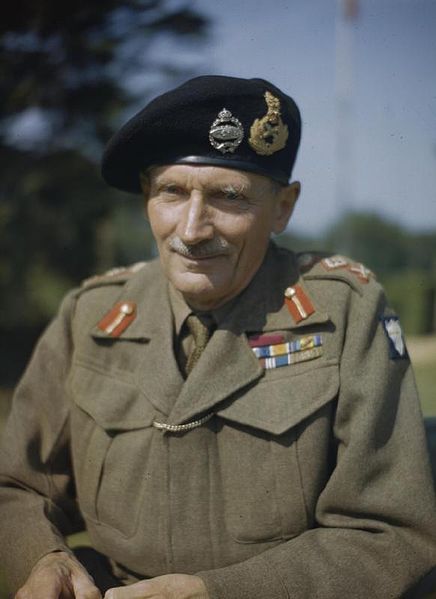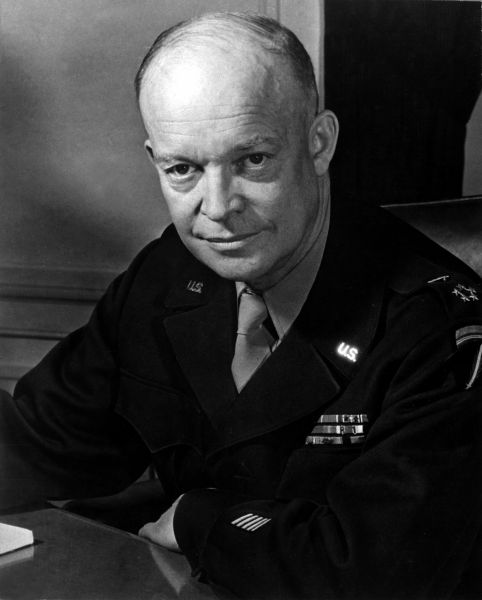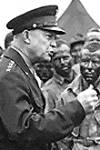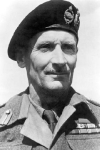Now It Can Be Told! - Whitehall's Wireless Link With the War
The War Illustrated, Volume 9, No. 223, Page 556-557, January 4, 1946.
The story of a remarkable British wireless set was released by the War Office in November 1945. It was used by Royal Signals soon after D-Day and throughout the campaign in Western Europe, and enabled Field-Marshal Montgomery in Luneburg to speak directly to Mr. Churchill in Whitehall with all the security of a closed telephone line. And the Germans never knew we had it.
The Field-Marshal called it his "No. 10 thing", its official and unromantic name being "Wireless Set No. 10". It provided the only speech communication across the River Maas and the Rhine for several weeks, and Montgomery's Tactical H.Q. was never out of touch for more than one hour with the whole of 21 Army Group and the War Office up to the surrender at Luneburg.
Incidentally, all speech communication to General Eisenhower after the crossing of the Rhine was maintained by the "No. 10 Set" to Brussels and thence by line. It is interesting in this connexion that the Surrender was signed on Hill 71 because the Set works best on high ground; this fact continually governed the choice of sites for Tactical H.Q. The advantage which the British Army had in possessing this Set was enormous when it is realized that a land line say of 20 miles involves the erection of 700 telegraph poles and is very vulnerable to enemy action.
The Set was designed by scientists of the Ministry of Supply, and the credit for this must go chiefly to four men: Mr. W. A. S. Butement, already well-known for his work in connexion with radar and the radio proximity fuse, Mr. A. J. Oxford, Mr. E. W. Anderson and Mr. J. G. MacMillan, who was later seconded to Royal Signals and was responsible for the field development of the Set. Butement in 1941 was the first to draw attention to the advantages of using centimetre waves for communication equipment, and the "centimetric" side was worked out by Anderson; Oxford suggested the eight-pulse "multi-channel" system which was worked out by Butement and Oxford.
It looks like an Army radar equipment, a 4-wheeled trailer with a pair of the now familiar circular mirrors mounted on top. In fact, the set is technically far more closely allied to a radar equipment than to any wireless set as generally understood. It operates at centimetre waves – the first time that these have been harnessed to the work of transmitting speech – and transmits its radio beam in the form of short pulses.
The sets are used in pairs, Set No. 1 sending out its pulses of centimetre waves (on which have been impressed the speech modulation), Set No. 2 picking them up; but since Set No. 1 sends out its pulses not singly but in groups of eight, and since Set No. 2 is fully competent to sort these out into eight separate lines, no less than eight separate conversations can be relayed simultaneously between one pair of sets.
This alone would not give it security; but the great advantage of centimetre waves is that they make possible the use of a very narrow beam, scarcely wider than that of a searchlight. This beam is stopped only by any fair-sized solid obstruction; which means that any pair of "10 Sets" can only operate over a clear unobstructed path, usually of about 20 miles and sometimes well over 50 miles. This had necessitated the careful selection of sites, and the sets (or at least their aerials) have often been mounted on towers, or on the roofs of tall buildings, to obtain the clear "line of sight" essential for successful operation.
How Eavesdroppers Were Foiled
This might appear to be a disadvantage: in reality it was a great advantage from the security aspect. For, just as the narrow beam implied that it could not be intercepted or even detected unless the eavesdropper was actually in the beam, so the clear line of sight implied normally that there was no means of getting into the beam short of hovering in mid-air with a quantity of heavy equipment. And although the Germans later claimed to have intercepted our wireless transmission with ease, careful interrogation showed not only that they had never intercepted a "10 Set" transmission, but also its very existence was entirely unsuspected.
The details of the disposition of these 20-mile "radio links" is a matter for military historians; and the history would make interesting reading. It would tell of how, at the end of 1942, the first experimental two-stage link was set up between a building in Horsham and the roof of Berkeley Court in London; of the link between Ventnor, Isle of Wight, and Beachy Head; of the first operational link, between Ventnor and Cherbourg (the most difficult of all, because the distance is inconveniently great, and the necessary sight line could only be obtained by raising the aerials several hundred feet.); and, finally, of the chain of ten "10 Set links" from Luneburg to Brussels, whence a normal land line connected it to Whitehall.
It would also tell of how the "10 Set" chain was able, because of the mobility of the set and of its specially designed transportable 60-ft. towers, to follow close behind the advancing front in a way that telephone lines could never have done. It might also tell of how the "10 Set" crew once arrived even earlier than usual and proudly captured a German official, resplendent in the ornate and glittering uniform of a Chief Air Raid Warden – under the entirely excusable impression that such magnificence must surely imply high military rank. Information was passed to the U.S.A.; and the Americans promptly set to work to design a set on the same lines.
Previous and next article from Now It Can Be Told!
Now It Can Be Told! - The Navy Landed 'Cloak and Dagger' Men
Hiding, camouflaged, in remote island creeks by day and sailing at night on privateering raids against enemy shipping and shore installations, seven 70-ft. Naval launches sapped Germany's hold on the
Now It Can Be Told! - D-Day Rehearsal at Cambridge University
One of the best-kept secrets of the war was revealed by an appeal launched for help in the restoration of the Union Society's premises, damage to which was caused by bombs in July 1942. Here, in this
Index
Previous article
Now It Can Be Told! - The Navy Landed 'Cloak and Dagger' Men
Hiding, camouflaged, in remote island creeks by day and sailing at night on privateering raids against enemy shipping and shore installations, seven 70-ft. Naval launches sapped Germany's hold on the
Next article
I Was There! - Hitler's Ex-Soldiers Cold-Shouldered in Berlin
The pitiful condition of the men who fought for Germany evokes no scrap of sympathy from the civilians, writes Stanley Nash in The Star. He has recently returned from a visit to one of the centres in







